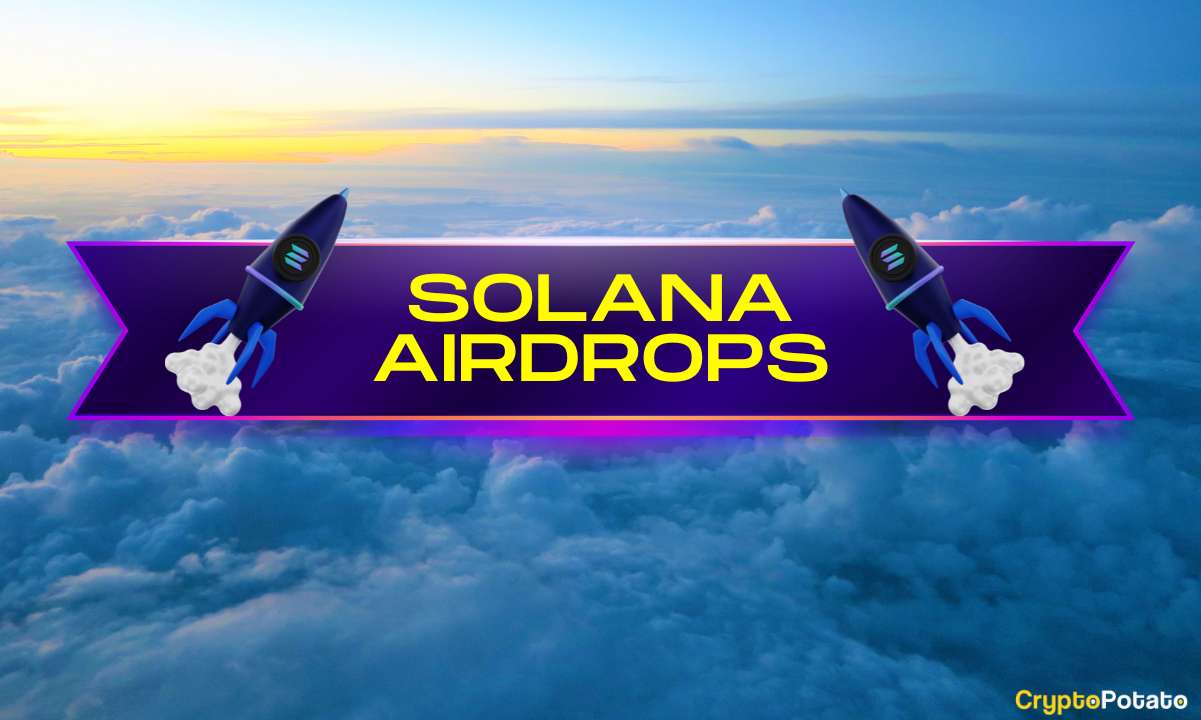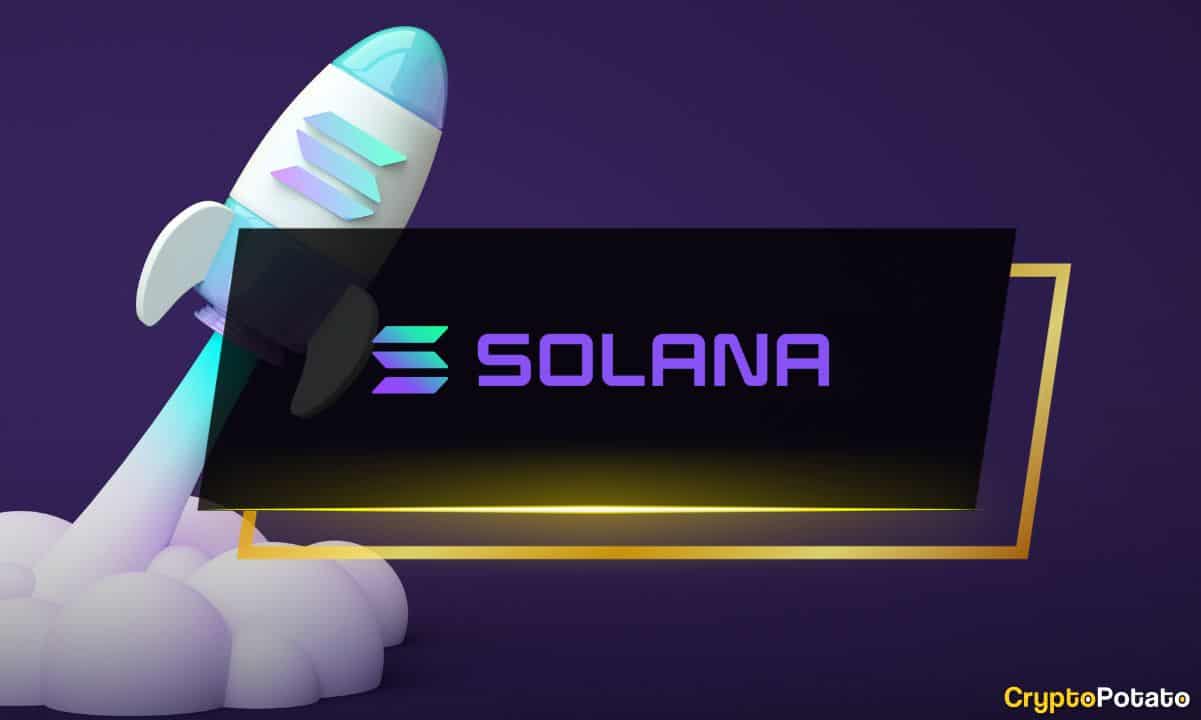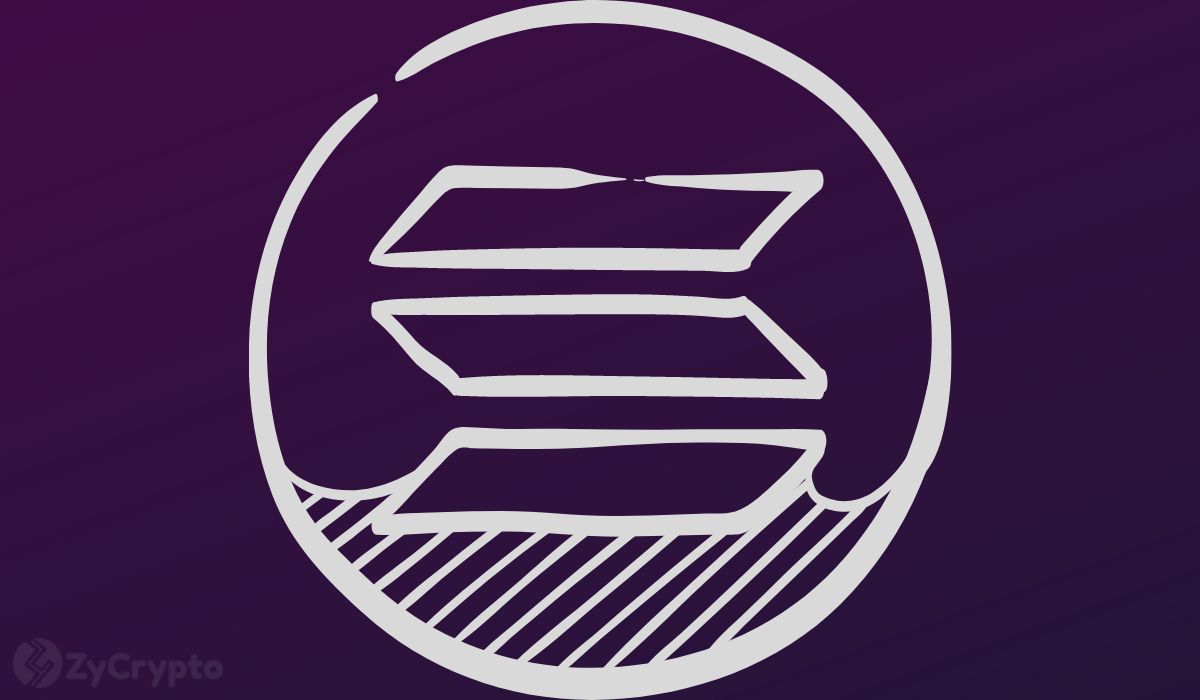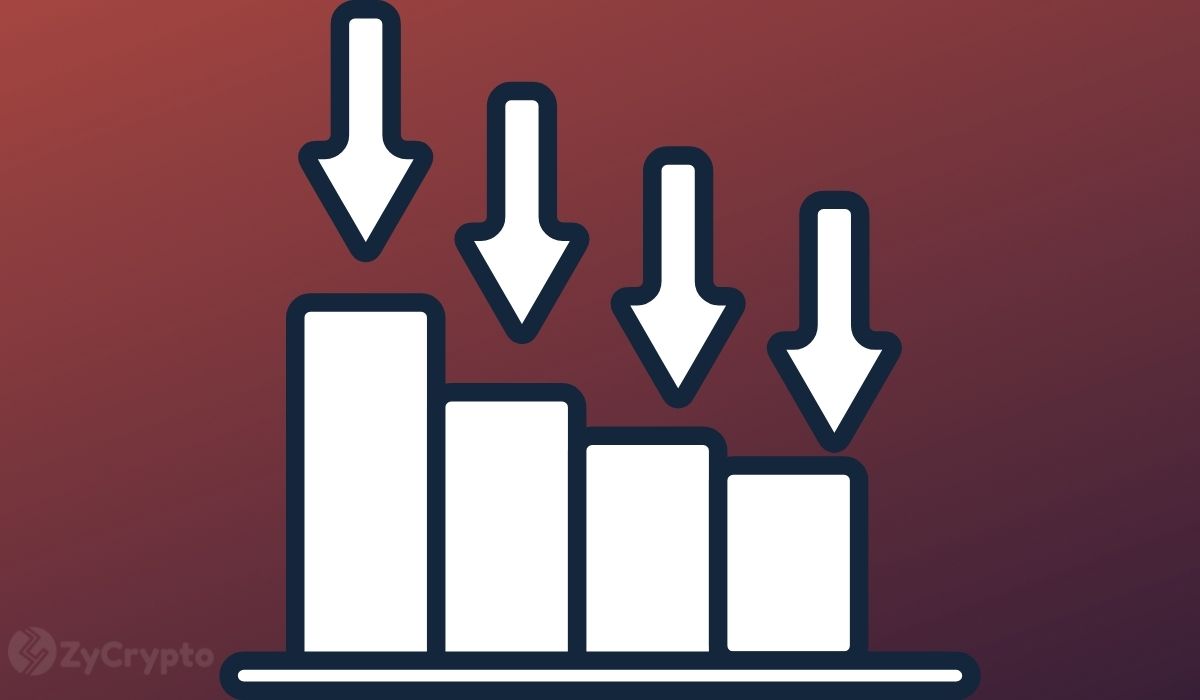Airdrops on Solana Guide: The Most Popular Protocols Without a Token
Airdrops are popular for several reasons: they are a dynamic and non-expensive marketing strategy for DeFi protocols and offer potentially lucrative rewards for early users.
That last point has airdrop farmers actively pursuing and researching DeFi protocols that might launch a token anytime soon.
If you’ve noticed, there are several tokenless protocols that have a points system. That’s because DeFi protocols love to offer points before an airdrop.
Below, we will take a look at the major protocols that have yet to drop a token but have somewhat hinted at a potential airdrop through points systems or otherwise.
Useful guides to read before starting to dive into airdrops on Solana:
- What Are Crypto Airdrops And How to Find the Next Major One?
- 7 Best Solana (SOL) Wallets: Full Comparison (Updated 2024)

How do Solana Airdrops Work?
Many projects decide to create a points system. It then helps them to quantify the number of tokens various user groups should receive and streamline the process, while also providing users with a purpose and an incentive system to keep using the protocol.
Points can be used for different reasons but mainly to incentivize users to remain actively engaged in the network; the more activities they perform — e.g., lending or staking their assets in a protocol — the more points they collect, providing them with benefits like access to exclusive features or rewards.
In a potential airdrop, users with the highest number of points are better rewarded for their commitment to the network. However, protocols can differ in how they adjust distribution volumes based on supply percentage (usually between 10% and 40%), type of assets to be distributed, number of tiers (score-based distribution), data management, etc.
Commonly, a protocol will use different tiers to adjust token distribution volumes. For example, a DEX protocol will use a proxy tiering system, or “seasons,” with the final results being based on the top number of users in the given tiers following volume adjustment:
- Tier 1: top 100 users with over 1M in trading volume: 100k tokens each
- Tier 2: top 1000 users with over 100k in trading volume: 50k tokens each
- So on and so forth.
Solana Airdrop Frenzy: The Top Tokenless SOL Protocols in 2024
Looking at the Solana ecosystem, you will notice how many of the top protocols by total value locked (TVL) don’t have a token yet but dispose of a points system.
Protocols with substantial backing by venture capital are prone to launch a token as investors most likely will want some form of compensation and liquidity for their investments and involvement.
This guide will cover both confirmed and potential airdrops from tokenless protocols, but note that any airdrop or token launch unless confirmed by the respective protocol, is speculative and not guaranteed.
Jupiter
Jupiter is a liquidity aggregator and Solana’s first on-chain swap aggregator. The native token, JUP, was scheduled for launch on January 31, 2024, followed by a confirmed airdrop as part of Jupiter’s strategy to attract more users.
The team designated 40% of the overall JUP supply for airdrops. Individuals who had engaged with the platform before November 2nd qualify to receive 10% of the total supply in the initial airdrop phase. However,
So, how to become eligible for the airdrop? It’s easy, just follow the steps below:
- First of all, visit the Jupiter website and connect your Solana wallet.
- Choose one of the many activities in Jupiter, such as Swap
- You can also check out their Perpetual trading section or leverage their bridge feature to perform cross-chain operations.
The remaining 30% will be distributed in three subsequent rounds of future airdrops. Therefore, those of you who didn’t use the platform by November last year may still qualify for future airdrops.
Same as before: ongoing interaction with the protocol — through activities like swapping, bridging, and trading — increases the chances of receiving an airdrop once Jupiter introduces the JUP token.

Zeta Markets
Zeta Markets is a DeFi platform that provides futures and options trading, marketed as an under-collateralized derivatives platform. It provides retail traders with the necessary features to hedge risks effectively against unstable market conditions, allowing them to protect their positions in case of harsh price swings.
Zeta Markets confirmed the launch of its native token through its X account, as well as an upcoming airdrop.
The introduction of Z-Score marks the initial phase leading to the introduction of the token, a program aiming to reward users and their activity in the Zeta protocol. The bigger the user’s trading activity, the bigger their Z-Score, and the bigger the chances of participating in the airdrop.
Zeta Markets Z-Score Leaderboard. Source: Zeta
The Z-Score program consists of Seasons in which the top three traders will accumulate the most points, receiving exclusive rewards.
MarginFi
MarginFi is a fully permissionless and decentralized lending protocol. It offers lending services with advanced risk management mechanisms and other features that provide flexibility, access, and a diverse set of options that benefit both lenders and borrowers.
While MarginFi doesn’t have a token as of now, it’s speculated that it may launch one in the future due to the number of investors backing the protocol and the introduction of a points system for interactions. As early users engage in lending, borrowing, referrals, and point accumulation, they might potentially qualify for an airdrop upon token launch.
This might help you qualify for a potential airdrop:
- Visit the Marginfi website and connect your Solana wallet.
- On the top left, check out some of the features you can interact with, such as staking, swapping, bridging assets, or lending and borrowing.
However, lending, borrowing, and referring are the three best ways to earn mrgn points:
- Lending Points: Users with current MarginFi deposits earn points (1 point per day per dollar lent). More lending and longer duration result in more points.
- Borrowing Points: Borrowers receive more points than lenders (4 points per day for $1 borrowed). Collateral for borrowing also counts for lending points.
- Referral Points: Users earn points through referrals (10% of referred users’ points). Referring users earn 10% of 10% earned by users they refer (continues down the referral tree as more users refer others)
Kamino Finance
Kamino Finance is a one-stop DeFi protocol for liquidity providers, traders, and stakers, as it combines lending, liquidity pools, and leverage trading in a single platform.
Kamino Finance, launched in August 2022, has raised over $10 million in fundraising from numerous high-profile institutions, including Solana Ventures and Jump Capital. Moreover, it recently introduced a points system that may qualify active users for potential airdrops.
Kamino points are adjusted through Seasons. Season 1 started in January and will last approximately three months the protocol will seek to provide a dynamic points system that incentivizes users to perform various activities on the platform, such as borrowing, lending, participating in liquidity vaults, and engaging in Multiply and Long/Short features and options.
The culmination of Season 1 will be the $KMNO Genesis Airdrop, scheduled for late Q1 or early Q2 2024.
To participate, users can visit the Kamino app, connect their Solana wallet, and start engaging in the multiple options and features, such as borrowing/lending, providing liquidity to pools, and exploring leverage trading and the “Multiply” one-click vault.
Meanwhile, for all of the above you will definitely need an on-chain wallet. We have a dedicated video guide on the best Solana wallets for 2024. Take a look here:
Parcl
Parcl is a real estate platform on the Solana blockchain, enabling users to invest in digital square footage of physical real estate in global markets. It offers a distinctive investment approach by allowing speculation on underlying price movements of houses and properties through smart contracts.
The company has secured $11.6M in funding from investors like Solana Ventures and Coinbase Ventures.
Parcl has a points system that rewards liquidity providers and might likely be used to determine which users receive the biggest rewards in a potential airdrop.
On Parcl, users can earn points in numerous ways:
- Provide liquidity in LP Pools to earn points (and trading fees). You can only use USDC and you will receive 3 points/dollar
- Create a trading account and earn points through trading (Through USDC as well)
- Referrals can boost the number of points earned — you can click on this section and enter a code to receive a 5% boost (you will also receive 10% of the points earned by each person you refer)
Marinade Finance
Marinade Finance is like the Lido of Solana — a liquid staking protocol that allows users to stake SOL tokens and receive rewards thanks to automated staking strategies. In other words, it simplifies the staking process by selecting the top 100 validators to delegate tokens. In exchange, you receive a tokenized version of your staked funds, mSOL, which you can use in other DeFi protocols.
That said, a strategy is to use mSOL on Marginfi or other supported protocols to increase the chances of qualifying for an airdrop.
While Marinade does have its own token, it wouldn’t hurt to keep an eye out for future airdrops as the protocol has announced the beginning of Earn Season 2. This new season is offering new rewards and exclusive content, and another airdrop might be on the way.
Users can earn additional MNDE by referring friends to the platform. To participate, users need to visit the Marinade website, connect their Solana wallet, stake their SOL to receive mSOL, and subsequently earn MNDE through staking and referrals.
The post Airdrops on Solana Guide: The Most Popular Protocols Without a Token appeared first on CryptoPotato.
Airdrops on Solana Guide: The Most Popular Protocols Without a Token
Airdrops are popular for several reasons: they are a dynamic and non-expensive marketing strategy for DeFi protocols and offer potentially lucrative rewards for early users.
That last point has airdrop farmers actively pursuing and researching DeFi protocols that might launch a token anytime soon.
If you’ve noticed, there are several tokenless protocols that have a points system. That’s because DeFi protocols love to offer points before an airdrop.
Below, we will take a look at the major protocols that have yet to drop a token but have somewhat hinted at a potential airdrop through points systems or otherwise.
Useful guides to read before starting to dive into airdrops on Solana:
- What Are Crypto Airdrops And How to Find the Next Major One?
- 7 Best Solana (SOL) Wallets: Full Comparison (Updated 2024)

How do Solana Airdrops Work?
Many projects decide to create a points system. It then helps them to quantify the number of tokens various user groups should receive and streamline the process, while also providing users with a purpose and an incentive system to keep using the protocol.
Points can be used for different reasons but mainly to incentivize users to remain actively engaged in the network; the more activities they perform — e.g., lending or staking their assets in a protocol — the more points they collect, providing them with benefits like access to exclusive features or rewards.
In a potential airdrop, users with the highest number of points are better rewarded for their commitment to the network. However, protocols can differ in how they adjust distribution volumes based on supply percentage (usually between 10% and 40%), type of assets to be distributed, number of tiers (score-based distribution), data management, etc.
Commonly, a protocol will use different tiers to adjust token distribution volumes. For example, a DEX protocol will use a proxy tiering system, or “seasons,” with the final results being based on the top number of users in the given tiers following volume adjustment:
- Tier 1: top 100 users with over 1M in trading volume: 100k tokens each
- Tier 2: top 1000 users with over 100k in trading volume: 50k tokens each
- So on and so forth.
Solana Airdrop Frenzy: The Top Tokenless SOL Protocols in 2024
Looking at the Solana ecosystem, you will notice how many of the top protocols by total value locked (TVL) don’t have a token yet but dispose of a points system.
Protocols with substantial backing by venture capital are prone to launch a token as investors most likely will want some form of compensation and liquidity for their investments and involvement.
This guide will cover both confirmed and potential airdrops from tokenless protocols, but note that any airdrop or token launch unless confirmed by the respective protocol, is speculative and not guaranteed.
Jupiter
Jupiter is a liquidity aggregator and Solana’s first on-chain swap aggregator. The native token, JUP, was scheduled for launch on January 31, 2024, followed by a confirmed airdrop as part of Jupiter’s strategy to attract more users.
The team designated 40% of the overall JUP supply for airdrops. Individuals who had engaged with the platform before November 2nd qualify to receive 10% of the total supply in the initial airdrop phase. However,
So, how to become eligible for the airdrop? It’s easy, just follow the steps below:
- First of all, visit the Jupiter website and connect your Solana wallet.
- Choose one of the many activities in Jupiter, such as Swap
- You can also check out their Perpetual trading section or leverage their bridge feature to perform cross-chain operations.
The remaining 30% will be distributed in three subsequent rounds of future airdrops. Therefore, those of you who didn’t use the platform by November last year may still qualify for future airdrops.
Same as before: ongoing interaction with the protocol — through activities like swapping, bridging, and trading — increases the chances of receiving an airdrop once Jupiter introduces the JUP token.

Zeta Markets
Zeta Markets is a DeFi platform that provides futures and options trading, marketed as an under-collateralized derivatives platform. It provides retail traders with the necessary features to hedge risks effectively against unstable market conditions, allowing them to protect their positions in case of harsh price swings.
Zeta Markets confirmed the launch of its native token through its X account, as well as an upcoming airdrop.
The introduction of Z-Score marks the initial phase leading to the introduction of the token, a program aiming to reward users and their activity in the Zeta protocol. The bigger the user’s trading activity, the bigger their Z-Score, and the bigger the chances of participating in the airdrop.
Zeta Markets Z-Score Leaderboard. Source: Zeta
The Z-Score program consists of Seasons in which the top three traders will accumulate the most points, receiving exclusive rewards.
MarginFi
MarginFi is a fully permissionless and decentralized lending protocol. It offers lending services with advanced risk management mechanisms and other features that provide flexibility, access, and a diverse set of options that benefit both lenders and borrowers.
While MarginFi doesn’t have a token as of now, it’s speculated that it may launch one in the future due to the number of investors backing the protocol and the introduction of a points system for interactions. As early users engage in lending, borrowing, referrals, and point accumulation, they might potentially qualify for an airdrop upon token launch.
This might help you qualify for a potential airdrop:
- Visit the Marginfi website and connect your Solana wallet.
- On the top left, check out some of the features you can interact with, such as staking, swapping, bridging assets, or lending and borrowing.
However, lending, borrowing, and referring are the three best ways to earn mrgn points:
- Lending Points: Users with current MarginFi deposits earn points (1 point per day per dollar lent). More lending and longer duration result in more points.
- Borrowing Points: Borrowers receive more points than lenders (4 points per day for $1 borrowed). Collateral for borrowing also counts for lending points.
- Referral Points: Users earn points through referrals (10% of referred users’ points). Referring users earn 10% of 10% earned by users they refer (continues down the referral tree as more users refer others)
Kamino Finance
Kamino Finance is a one-stop DeFi protocol for liquidity providers, traders, and stakers, as it combines lending, liquidity pools, and leverage trading in a single platform.
Kamino Finance, launched in August 2022, has raised over $10 million in fundraising from numerous high-profile institutions, including Solana Ventures and Jump Capital. Moreover, it recently introduced a points system that may qualify active users for potential airdrops.
Kamino points are adjusted through Seasons. Season 1 started in January and will last approximately three months the protocol will seek to provide a dynamic points system that incentivizes users to perform various activities on the platform, such as borrowing, lending, participating in liquidity vaults, and engaging in Multiply and Long/Short features and options.
The culmination of Season 1 will be the $KMNO Genesis Airdrop, scheduled for late Q1 or early Q2 2024.
To participate, users can visit the Kamino app, connect their Solana wallet, and start engaging in the multiple options and features, such as borrowing/lending, providing liquidity to pools, and exploring leverage trading and the “Multiply” one-click vault.
Meanwhile, for all of the above you will definitely need an on-chain wallet. We have a dedicated video guide on the best Solana wallets for 2024. Take a look here:
Parcl
Parcl is a real estate platform on the Solana blockchain, enabling users to invest in digital square footage of physical real estate in global markets. It offers a distinctive investment approach by allowing speculation on underlying price movements of houses and properties through smart contracts.
The company has secured $11.6M in funding from investors like Solana Ventures and Coinbase Ventures.
Parcl has a points system that rewards liquidity providers and might likely be used to determine which users receive the biggest rewards in a potential airdrop.
On Parcl, users can earn points in numerous ways:
- Provide liquidity in LP Pools to earn points (and trading fees). You can only use USDC and you will receive 3 points/dollar
- Create a trading account and earn points through trading (Through USDC as well)
- Referrals can boost the number of points earned — you can click on this section and enter a code to receive a 5% boost (you will also receive 10% of the points earned by each person you refer)
Marinade Finance
Marinade Finance is like the Lido of Solana — a liquid staking protocol that allows users to stake SOL tokens and receive rewards thanks to automated staking strategies. In other words, it simplifies the staking process by selecting the top 100 validators to delegate tokens. In exchange, you receive a tokenized version of your staked funds, mSOL, which you can use in other DeFi protocols.
That said, a strategy is to use mSOL on Marginfi or other supported protocols to increase the chances of qualifying for an airdrop.
While Marinade does have its own token, it wouldn’t hurt to keep an eye out for future airdrops as the protocol has announced the beginning of Earn Season 2. This new season is offering new rewards and exclusive content, and another airdrop might be on the way.
Users can earn additional MNDE by referring friends to the platform. To participate, users need to visit the Marinade website, connect their Solana wallet, stake their SOL to receive mSOL, and subsequently earn MNDE through staking and referrals.
The post Airdrops on Solana Guide: The Most Popular Protocols Without a Token appeared first on CryptoPotato.

